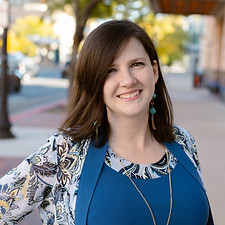
MISSION
Building community to end poverty through intentional friendships, personal transformation, and systemic change led by the people closest to the challenge.
VISION
All individuals live in equitable, thriving communities where poverty no longer exists.
“Circles is one of the best models for long-term poverty reduction I have ever encountered. It sets up a new dynamic that puts the families who want to become economically stable in the driver’s seat rather than being viewed as clients choosing predetermined options. All involved create a community conversation to reduce poverty regionally.”
— Lynette Fields (Executive Director of Poverty Solutions Group)
Circles USA Annual Impact Reports
®
“Welcome to the 2024 Impact Report reflecting the hard work of our national community of practice, now spanning 26 states and 73 communities. As we focused on growing into the Next Chapter of Circles, we reconfigured our national office; upgraded our website, curriculum, and resources for chapters; and strengthened our partnerships in the national anti-poverty arena. As our organization is maturing, we are ready to Move Beyond in 2025...but first, take some time to honor where we have been and all that has been accomplished in Circles in 2024.”
— Kamatara Johnson
(Circles USA Executive Director)
Circles reports chapter results at individual and community levels. Participants steadily grow skills and income, decrease dependence on public assistance, and expand resources and support networks. At the community and national levels, Circles USA connects diverse peoples across class lines and ideology, changes attitudes about poverty, and contributes to policy change.
Circles USA collects participants’ survey data prior to the start of the initiative, after training, and then every six months during the initiative. Longitudinal data is collected at 24, 36, and 48 months.
Case Studies
Denny, Justin, Brian Garvey, Lenie Nguyen, and Abia Sebaka. “Poverty Reduction and Determinants of Health.”
Journal of Poverty, January 13, 2024, 1–14.

Public health professional students at the University of Western Australia (UWA) Sebaka and Nguyen, along with UWA Associate Professor Denny, analyzed multiple years of Circles USA data and found significant income growth for participants. The UWA research team, along with Garvey (an Associate Professor in the Department of Family Medicine, Oregon Health & Science University), synthesized this data into a new resource for academic and independent sector workers in poverty alleviation.
Circles USA’s Cliff Effect Report for New Mexico First:
Policy Recommendations for Advocates, Leaders, and Stakeholders around the Cliff Effect

Circles USA has identified the cliff effect as the biggest barrier to families to getting out of poverty. The cliff effect occurs when working families lose public benefits faster than they can earn income to replace the lost resources. This report will examine the cliff effect felt by New Mexico families using three hypothetical cases. The cases are followed by recommendations for possible remediation to lessen the impact of the cliff effect. The data presented in this report is based upon the cliff effect estimating tool (CEPT) developed by Circles USA for New Mexico.
Office of Family Assistance Brief:
“Social Capital Initiatives
To Achieve Employment Goals”

In 2019, Circles USA was featured as an innovative strategy for TANF programs in a brief from the Administration For Children & Families’ Office of Family Assistance This brief was part of the Office of Family Assistance’s Emerging Practice Series, highlighting how TANF agencies and their partners are helping low-income individuals gain and sustain meaningful employment.
Cliff Effect Report Released in Michigan:
Policy Recommendations for Advocates, Leaders, and Stakeholders around the Cliff Effect

The report focuses on the Cliff Effect from Michigan’s Family Independence Program (FIP), Food Assistance Program (FAP), and Child Development and Care Program (CDC). Policy-level recommendations focus on bringing awareness to key stakeholders (public officials, community leaders, and Michigan employers) about the impact of the Cliff Effect on families seeking economic self-sufficiency, development of community assistance programs to help families avoid cliffs, and the development of employment training programs to help displaced workers in Michigan.














.jpg)






































